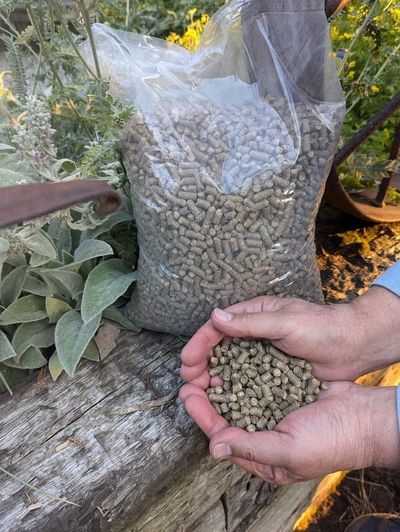Gardening: September a good time to work on lawns

September is the best time of the year to do a lawn renovation or replacement. The soil is warm but the days are cooling down so that the seed and roots will germinate and grow quickly without the pressure of the hot, early summer weather.
If a lawn has only a few bare areas or is thin, renovating it may be straight forward. Rake out any debris and level rough patches. Treat weedy areas with an herbicide like Weed B Gon about two weeks ahead of the seeding project. Follow the label directions. Then add a 1-inch layer of compost to the entire area and broadcast new seed in two batches across the area. Go in one direction and then in a direction 90 degrees from the original. This ensures that seed is evenly distributed. Lightly rake in the seed and cover the area with pelleted mulch available at good garden centers. The mulch expands when it gets wet to help retain moisture. Roll the area with a lawn roller to get the seed in contact with the soil and water everything in well. Set up sprinklers to come on twice a day to keep the surface moist. The seed should germinate within a week. Wait a couple of weeks before lightly fertilizing the area.
Replacing or installing a new lawn takes more planning and work. If the area is full of weeds, treat the area early in September with an herbicide to kill the weeds to their roots. Add an inch of compost and apply a good slow-release fertilizer. Rake the area level and water well just before seeding or laying the sod. As mentioned above apply the seed and mulch evenly in two directions and roll the area.
What type of seed or sod should you put down? Fescue seed mixes are more drought tolerant than traditional Kentucky blue grass which is a consideration given our ongoing drought issues. Fescue grasses are also more shade tolerant than bluegrass so if you have a shady yard, they would be more likely to do well in that environment. Kentucky bluegrass sod is more readily available in the area, but fescue sod is available from a few suppliers.
There are a number of online sources for seed as well. However, you will need to check if a particular seed offering is hardy in our area or that they can be planted in the fall. There are several types marketed as low- or no-mow grasses and some of them are for warmer areas than ours. A popular trend in lawns is to plant clover in place of grass. Unfortunately, clovers need warmer weather after seeding than a fall planting allows so it’s better planted in the spring. The one challenge of straight clover lawns is that they aren’t as durable or shade tolerant as a clover grass seed mix would be over time. If you want to do this, seed the grass this fall and then overseed with clover in the spring.